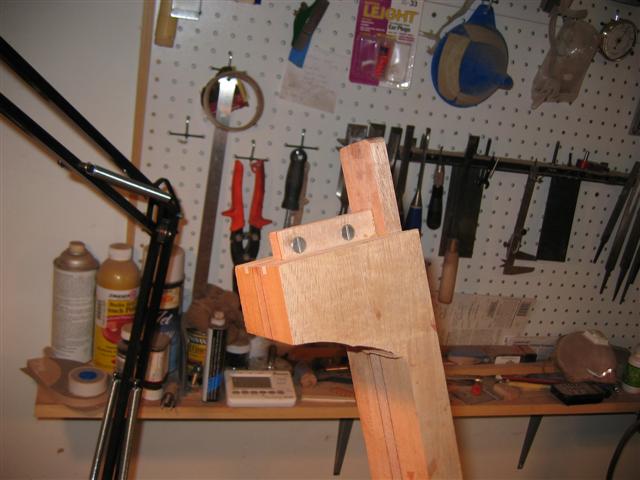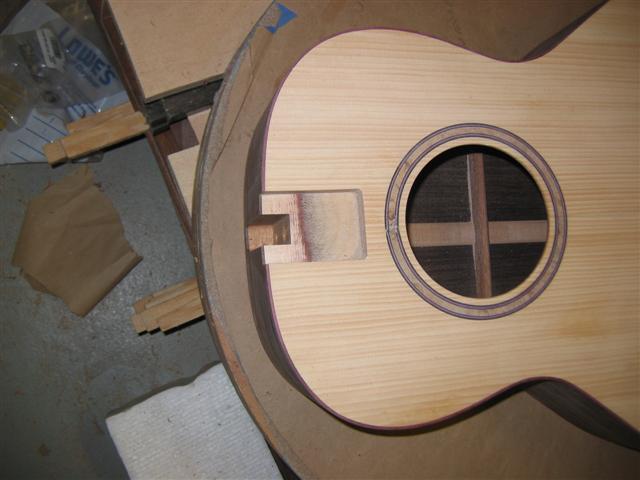Thanks for the info guys.
Dave, the neck joint is based on the version that John Mayes uses. The only difference is that I mortise the second tenon into both the body and the neck blank for added strength. It also prevents the 14th fret hump. I think Paul Woolson does something similar.
Here are some pics of the one I'm working on now.


